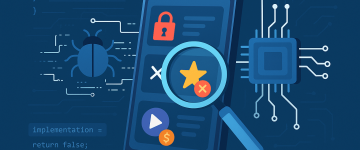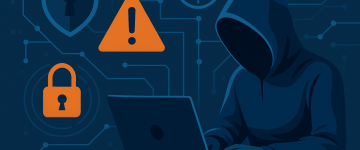The number of global cyber-attacks is increasing each year at a rapid rate.
According to a study by Cybersecurity Ventures, in 2023 a cyberattack took place every 39 seconds, or over 2,200 times per day. This is a 12.8% increase from 2022. Attackers are getting more sophisticated and are increasingly using AI tools to automate and increase the volume of their attacks, and traditional defences are struggling to keep up.
Security Operations Centre (SOC) analysts and real-time monitoring tools are turning to AI-driven solutions in order to combat them. Below is a brief summary of how AI-powered solutions like CrowdStrike, Splunk, and Sentry are leveraging AI driven tools for cyber threat detection and prevention.
The Power of AI in Cybersecurity
AI’s ability to analyse large amounts of data at lightning speed is a game-changer. It can identify patterns and anomalies that would take humans ages to spot. Speed is not the only advantage this brings however, there is also precision and foresight. AI can predict potential threats before they manifest, giving SOC analysts a proactive stance rather than a reactive one. It also provides a solution to a problem that many SOC analysts experience: working nights or a rotating shift pattern can affect a person’s concentration and judgement. Fatigue and disrupted sleep schedules are common issues, leading to slower reaction times and the increased likelihood of human error.
However, AI-powered solutions operate consistently and effectively around the clock, helping cybersecurity professionals on the front line maintain a high level of vigilance and reducing the risk of missed threats.
Furthermore, AI systems can continuously learn from new data, evolving and improving their threat detection capabilities over time. This dynamic adaptation ensures that AI stays ahead of emerging threats and evolving tactics used by cybercriminals.
CrowdStrike
CrowdStrike’s Falcon AI platform uses machine learning to detect and block malicious activities. By analysing billions of events in real time, it identifies patterns that indicate a threat. This means less time sifting through logs and more time focusing on critical incidents. CrowdStrike’s AI also provides valuable insights into the tactics, techniques, and procedures (TTPs) of attackers, enabling better preparedness and response.
CrowdStrike also offers Charlotte AI, a generative AI ‘security analyst’ which can help an analyst write playbooks to deal with an attack, from conversational prompts. This aims to speed up the response to incidents, as well as reduce the time that it takes a new analyst to become familiar with the CrowdStrike system. This tool leverages the power of AI to streamline operations, making the entire cybersecurity process more efficient and effective.

Splunk
Splunk is another heavyweight in the AI cybersecurity arena. Its platform turns machine data into actionable insights. With AI-driven analytics, Splunk can pinpoint unusual behaviour across an organisation’s infrastructure. SOC analysts benefit from this by getting clear, concise alerts about potential threats without the noise of false positives. Splunk’s AI also helps in automating responses, making it quicker to neutralise threats and reducing the workload on human analysts.
Splunk also offers a conversational AI assistant, Splunk AI Assistant, which allows a user to search through data, or generate queries, using plain English prompts. This makes it easier for analysts of all skill levels to interact with the system and quickly get the information they need, enhancing productivity and response times.

Sentry
Sentry focuses on error monitoring and application performance. Its AI capabilities are crucial for detecting anomalies that could indicate a security issue. Utilising what it calls Whole Network AI Analysis, Sentry’s real-time device and network traffic monitoring automatically blocks excess traffic to any endpoint on the network.
By continuously monitoring and learning from network traffic patterns, Sentry’s AI can adapt to new threats and reduce false positives, providing SOC analysts with more accurate and reliable alerts. This leads to faster resolution times and a more secure network environment.

Summary
AI is a powerful tool, but it’s also more than that. It’s an assistive technology that helps frontline cybersecurity professionals sift through data and formulate a response faster than ever. It handles the heavy lifting of data analysis, threat detection, and even the initial response, freeing up human analysts to focus on more strategic tasks. AI-powered solutions like CrowdStrike, Splunk, and Sentry are not only improving the efficiency and effectiveness of cybersecurity operations but are also paving the way for a future where cyber threats are anticipated and neutralised before they can cause harm.
As the number of global threats increase each year, AI assistive technologies are helping analysts not just respond to threats, but to outsmart the attackers too.
This post was written by Chris Hawkins.















